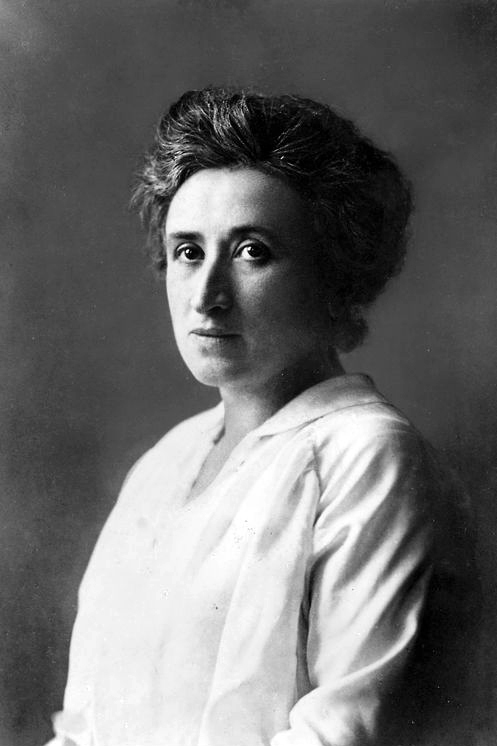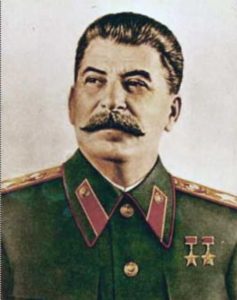The Face of Revolution: Reflections on Red Rosa
The Polish-Jewish revolutionary Rosa Luxemburg (1871–1919) was that rare thing: a sympathetic Marxist. Unlike Lenin, Stalin, Trotsky and the feuding revolutionaries of our own day, she doesn’t seem to have fuelled her politics mainly on power-lust, egomania and hatred. She opposed Bolshevik tyranny and defended free speech with the classic line Freiheit ist immer Freiheit der Andersdenkenden — “Freedom is always the freedom of those who think differently.” She loved nature, wanted the call of the “large blue titmouse” carved on her gravestone, and even had a soft spot for wasps.
“Written on her face…”
Would she have remained sympathetic if she’d come to power in the working-class revolution she tried to foment in Germany after World War I? We’ll never know, because she was murdered in 1919 by right-wing Freikorps troops in Berlin. One thing seems certain, however. If Marxists had come to power in Germany, they would have created tyranny à la Lenin, not Freiheit à la Luxemburg. That’s what happened in Hungary at the same time during the disastrous but thankfully brief “communist republic” ruled by the Jewish Marxist Béla Kun (i.e., Cohen). Unlike Kun, Luxemburg never got to power and her martyr’s death has ensured her a special place in Marxist hagiology. You could call her the Bonnie Prince Charlie of progressive politics, but with an important caveat: she wasn’t bonny.

The face of revolution: Rosa Luxemburg
Instead, she had decidedly Jewish features. You can see them on almost every page of Kate Evans’ Red Rosa: A Graphic Biography of Rosa Luxemburg (Verso, 2015). Evans doesn’t merely embrace Luxemburg’s Jewishness: you could say she insists on it. She quotes from a letter of Luxemburg’s: “I have no special place in my heart for the ghetto. I feel at home wherever there are clouds and birds and human tears.” (15) To illustrate these sentiments, Evans portrays Luxemburg in profile gazing at a swallow through the window of a synagogue. The text below continues: “Rosa’s lack of religious faith cannot buy her freedom. Her cultural identity is written on the features of her face. She will always be seen as a Jew.”
Smash the Slate
As a revolutionary socialist, Evans undoubtedly believes in the tabula rasa, namely, that human beings are a “scraped tablet” or blank slate on which new culture and new forms of behaviour can be written as we (or our Marxist masters) please. But her graphic novel is actually testament to the opposite theory: the tabula Rosa, namely, that human beings are not blank slates at all. Cultural identity is indeed “written” on the face, because culture affects genetics and human features are under strong genetic control.

Rosa Luxemburg had an unmistakeably Jewish face, as Evans herself acknowledges. But Luxemburg also had an unmistakeably Jewish brain, as Evans would not acknowledge. A human face is rather like the cover to a book: it tells us something about the brain sitting behind it and about the genetics of the person bearing it. Like a native of Fiji or Tibet, Rosa Luxemburg had a nose, mouth, chin, eyes and so on. But she could never have been mistaken for a native of Fiji or Tibet: her human face had racial variants that clearly marked it out as Jewish.
That isn’t controversial. What is controversial is to say that her brain was also clearly Jewish. Like that of a Fijian or Tibetan, it had frontal lobes, hippocampi, amygdalae, a cerebellum, and so on. But her human brain had racial variants that clearly marked it out as Jewish. You could say her brain had “Jewish features,” just as the brain of an individual from another race has features characteristic of that race:
Modeling the 3D Geometry of the Cortical Surface with Genetic Ancestry
- Geometry of the human cortical surface contains rich ancestral information
- The most informative features are regional patterns of cortical folding and gyrification
- This study provides insight on the influence of population structure on brain shape
… Here, we demonstrate that the three-dimensional geometry of cortical surface is highly predictive of individuals’ genetic ancestry in West Africa, Europe, East Asia, and America, even though their genetic background has been shaped by multiple waves of migratory and admixture events. The geometry of the cortical surface contains richer information about ancestry than the areal variability of the cortical surface, independent of total brain volumes. Besides explaining more ancestry variance than other brain imaging measurements, the 3D geometry of the cortical surface further characterizes distinct regional patterns in the folding and gyrification of the human brain associated with each ancestral lineage. (Modeling the 3D Geometry of the Cortical Surface with Genetic Ancestry, Current Biology, Volume 25, Issue 15, 3rd August 2015)
The Opium of the Intelligentsia
Among the Jewish features of that brain were her high intelligence and literary ability. The Jews are the People of the Book, with a long history of literacy and of enhanced reproductive success for those best able to master complex religious texts like the Talmud. Jewish culture has shaped Jewish genetics: both equipped Luxemburg for a life spent studying, creating and editing complex texts in several languages. This is why Evans is wrong to say that Luxemburg lacked “religious faith.” She might have rejected the traditional Judaism of her rabbi-grandfather (15), but she embraced Karl Marx’s re-working of that Judaism. Leszek Kołakowski, the great Polish philosopher and intellectual historian, sums up Luxemburg’s psychology like this in Main Currents of Marxism (1978):
Rosa Luxemburg is an outstanding example of a type of mind that is often met with in the history of Marxism and appears to be specially attracted by the Marxist outlook. It is characterized by slavish submission to authority, together with a belief that in that submission the values of scientific thought can be preserved. No doctrine was so well suited as Marxism to satisfy both these attitudes, or to provide a mystification combining extreme dogmatism with the cult of ‘scientific’ thinking, in which the disciple could find mental and spiritual peace. Marxism thus played the part of a religion for the intelligentsia, which did not prevent some of them, like Rosa Luxemburg herself, from trying to improve the deposit of faith by reverting to first principles, thus strengthening their own belief that they were independent of dogma. (“Rosa Luxemburg and the Revolutionary Left,” chapter III, pp. 94–5 of Main Currents of Marxism: Its Rise, Growth and Dissolution, Vol. II, “The Golden Age”, Oxford University Press, 1978)
Like Christianity, Marxism was a universalist re-working of the particularist religion of Judaism. Like Christianity, it proved very successful and won power over millions of non-Jews. But the high priests of Marxism were drawn disproportionately from Jews, with their verbal facility and taste both for wielding authority and for yielding to it. As Kevin MacDonald has explained in Culture of Critique, Jewish intellectual history in the modern era is full of charismatic crypto-rabbis around whom disciples have gathered to learn complex (but ultimately vacuous) systems of thought like Marxism and Freudianism.
The Red Rebbe
MacDonald describes how Jewish students in his student days at the University of Wisconsin “idolized historically important Jewish leftists such as Leon Trotsky, Rosa Luxemburg, and Herbert Marcuse.” In short, she was a female crypto-rabbi in the Marxist cult. She was idolized in Britain too: she became one of the inspirations for the Trotskyist Yigael Gluckstein (1917–2000), who, under the pseudonym Tony Cliff, founded the Socialist Workers Party (SWP) in Britain. Like Luxemburg, Gluckstein wrote and orated tirelessly in the cause of revolution. Someone who knew him well has described him like this:
One thing that was immediately apparent about Cliff, lifelong atheist and anti-Zionist though he was, was how profoundly Jewish he was. You got this from the very cadences of his speech. There was a broad streak of the Borscht Belt comedian in there (if I heard the joke about the rabbi and the goat once, I heard it a dozen times); one could also, if one closed one’s eyes, imagine Cliff bearded and wearing a shtrayml [fur hat], in the role of a Hasidic rebbe expounding his mystical interpretation of the Toyre to his fanatical band of followers. But it’s a broader cultural thing. If I say Cliff was a Talmudist, I don’t mean that as an insult. You all know, of course, that the Talmud is a codification of halokhe, of Jewish religious law, but that’s far from all it is. The Talmud is also five thousand or so pages of rabbinic sages scoring off each other using not only halokhic erudition, but also puns, insults, bad jokes, gossip and anecdotes of dubious relevance. Sound familiar? Put Cliff two millennia in the past and have him speaking Aramaic, and he’d have fit right in. (“The most unforgettable person I’ve ever met in my life,” Splintered Sunrise, 28th August 2011)

Red Rebbe: Tony Cliff (né Yigael Gluckstein)
Rosa Luxemburg couldn’t have been a rabbi two thousand years ago, but she would have “fit right in” as a Jewish feminist in the 1960s and ’70s or as a Jewish academic today. I’d suggest that she might have been a less obnoxious version of “the White-race-is-the-cancer-of-human-history” Susan Sontag, someone else whose brain had “Jewish features.”
Unfettered Iron
But if Luxemburg wasn’t as obnoxious as Sontag, she shared Sontag’s strong will and determination in pursuit of her goals. As Leszek Kołokowski notes: “In her pamphlet on the Russian revolution she urged Lenin to introduce unfettered democracy and at the same time to crush all nationalist movements with an iron hand, not suspecting for a moment that there might be any inconsistency in these two demands.” (Op. cit., pg. 96) The true test of Luxemburg’s character would have come if the revolution she sought in Germany had successfully instituted a Marxist state. Would she have opposed or acquiesced in the tyranny that followed?
She never faced that test. Instead, she and Karl Liebknecht, the “two chief Communist leaders” in Germany according to Kołokowski (65), were captured by Freikorps troops in Berlin and murdered during the night of 15–16 January 1919. The end of Luxemburg’s life is the most powerful section of Red Rosa: Kate Evans depicts the Freikorps troops driving her body for disposal in a canal under the watchful eye of the moon. Or rather: the eyes of the moon, which Evans has given Luxemburg’s face.

Martyr’s gaze: image from Red Rosa
After she was dropped from a bridge into the canal, Luxemburg floated face upward (176), gazing back at the moon in a visual echo of the pose she was given at the beginning of the book, as a baby in the Polish city of Zamość (pg. 3). Kate Evans is a skilful artist, but her repeated images of Luxemburg’s face say much more than she realizes. Rosa Luxemburg was the Jewish face of revolution because she had a Jewish brain for revolution, combining high intelligence and verbal facility with will-power and hostility towards the wider non-Jewish society and its institutions.
Outsiders as oppressors
I don’t think Evans herself is Jewish, but she echoes typical themes of the Jewish left in her biography of Luxemburg. Society is cruel, corrupt and oppressive. Beautiful non-Jewish girls in Red Rosa do not have beautiful characters: they behave disdainfully towards Rosa (7, 39), and they don’t care about the poor as Rosa does (9–10). But Luxemburg wasn’t an outsider in politics just because she was a Jew: she was also an outsider as a woman and the victim of what Evans diagnoses as “congenital hip dysplasia” (4). But I don’t think any of this would have softened the consequences if Marxism had triumphed in Germany. The Bolshevik Revolution demonstrates what happens when ethnic outsiders come to power. We should all remember that as White countries everywhere are undergoing demographic changes that will make them minorities within the century.
Rosa Luxemburg was that rara avis — a sympathetic Marxist — because Marxism is not a sympathetic creed. She didn’t live to witness the triumph of Stalin, but Stalinism was the logical culmination of her own work and ideas.
The paradox of bio-denial
Stalin had another face of revolution: “ruggedly handsome,” as Orwell puts it in Nineteen Eighty-Four (1949). Like the part-Jewish Lenin and the fully Jewish Trotsky and Luxemburg, he was another Marxist outsider, a Georgian from the mountainous and feud-ridden region known as the Caucasus. It’s also home to the famously aggressive and war-like Chechens, whose most famous modern representatives are the Boston Bombers. Human evolution has taken similar paths in similar regions, and Stalin’s “cultural identity” of aggression and struggle was “written on the features of [his] face,” just as Luxemburg’s Jewish identity was.

Josef Stalin (né Ioseb Besarionis dze Jughashvili)
In earlier times, Stalin might have become a successful bandit chief; in the twentieth century, his innate cunning and ferocity carried him to supreme power over a vast empire. Marxism, which denies the power of biology, is in fact replete with examples of biology’s importance, from the sympathetic Red Rosa to the unsympathetic Red Tsar. You might call it the paradox of bio-denial and Kate Evans’ graphic biography of Rosa Luxemburg is a fine example of that paradox. Red Rosa bloomed for the same reason as the flower after which she was named: because she had the right genetics in the right environment.
That is blasphemy to orthodox historians and anthropologists today, but history and anthropology aren’t immune from the heterodox forces now rising in the West. Bio-politics will be a revolution based on solid reality, not sacred texts. It will be based on squishy reality too: the human brain in its box of bone.





Comments are closed.